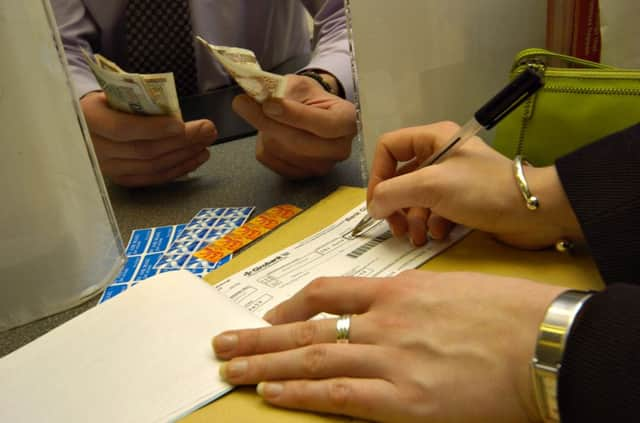Leaders: Debate on council tax is worthwhile


The poll and its accompanying press release may be seen as yet another ploy by Cosla to prise open the money box, given the freeze on council tax increases since 2007 and that significant budget cuts lie ahead.
Nevertheless, neither ratepayers nor the SNP administration can reasonably expect local government services to be maintained at the levels of recent years while there is a lock on council tax rises and while support from central government is reduced. Cosla president David O’Neill should not be criticised for seeking to spark “a mature and evidence-based debate about the kind of democracy we want… We want to deliver real change and we want to influence change elsewhere”.
Advertisement
Hide AdAdvertisement
Hide AdThere is good reason to encourage public debate on the future financing of local government. Many voters may indeed wish to pay a little more by way of council tax if they were convinced that the revenue would go to sustain essential local services covering street lighting, refuse collection, vital utilities and welfare.
But they have had good cause, also, to suspect that many councils are still top-heavy with bureaucrats, that services have not always been delivered efficiently and that there is wasteful and unnecessary spending. Periods of budget standstill or reduction provide a necessary purgative discipline on local authorities to bear down on the fat, cut out unnecessary or little-used services and improve through innovation and adaptation.
This is especially the case when, overall, we are still wrestling with a huge budget deficit and when public-sector debt, already at a record £1.2 trillion, is continuing to climb. Budget provision now has to be made for ever-rising debt interest charges. That is what lies at the core of government spending constraint – national and local.
Scotland’s councils are facing a £350 million fall in funding for local services in 2014-15. But as a share of the £7 billion-plus total, it amounts to 3.5 per cent – awkward, but barely beyond the pale given what businesses and households have endured.
However, such wider considerations and constraints should not stand in the way of a broad discussion on the future of local government finance, for the more the dependency on central government support, the greater the loss of transparency, local accountability and control. If such a debate can embrace a truly broad swathe of the rate-paying public and not just vested interests and the spending lobbyists, Cosla’s call may serve a useful purpose.
Left spellbound by maths wizard
Where would we be without the ubiquitous, ever-useful calculator? Indeed, where would we be without the decimal point? Never has a more modest symbol have come to mean so much or lie at the heart of everyday life – from the calculation of buildings to the minding of our bank balances.
For these we owe John Napier, a brilliant mathematician, physicist and astronomer and one of Scotland’s greatest scientists. He was also the author of, if not one of the bestselling but certainly the most thumbed books of all time – Napier’s logarithm tables.
His innovations facilitated the solution of long, laborious arithmetical problems. More calculations could be worked out in an hour than had previously been possible in a day. His work was particularly useful in navigation and astronomy.
Advertisement
Hide AdAdvertisement
Hide AdSo how well deserved and how fitting that the National Museum of Scotland should stage an exhibition of his life to coincide with the 400th anniversary of the publication of his logarithmic tables – a vital tool right up until the 1970s when the electronic calculator swept all before it.
Napier presents one of the greatest enigmas for biographers. He was a member of the nobility resident in Edinburgh, dropped out of full-time education to travel round Europe, developed a keen interest in religious affairs and was reputed to dabble in the occult.
A feature of the exhibition will be a cannonball embedded in the 15th-century castle where Napier lived. Among his many idiosyncrasies were that he carried a black spider around and reputedly used a rooster to catch out servants suspected of thieving. The suspicion that he was descended from wizards could almost be true, given the lasting genius of his work.